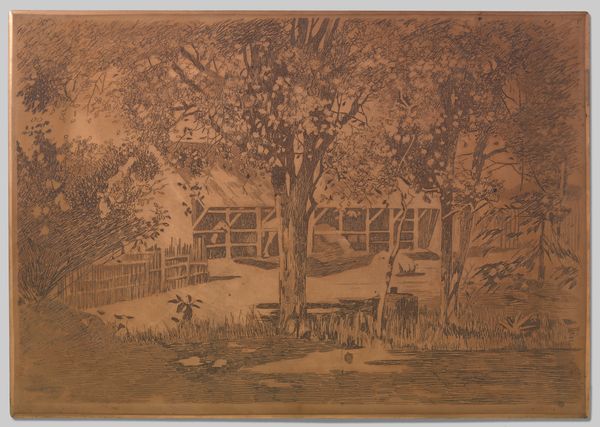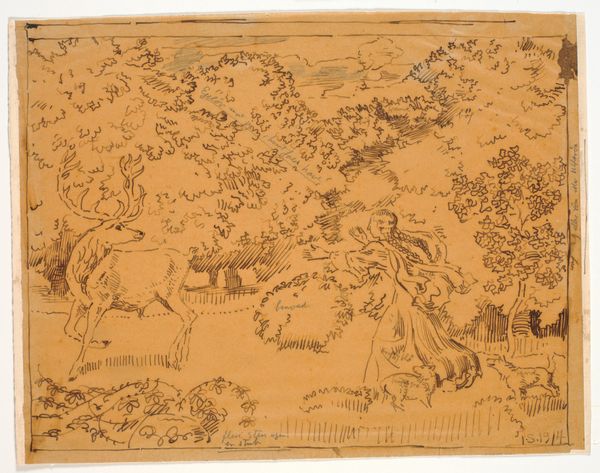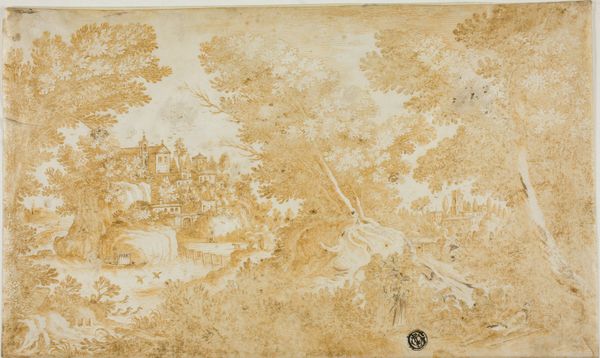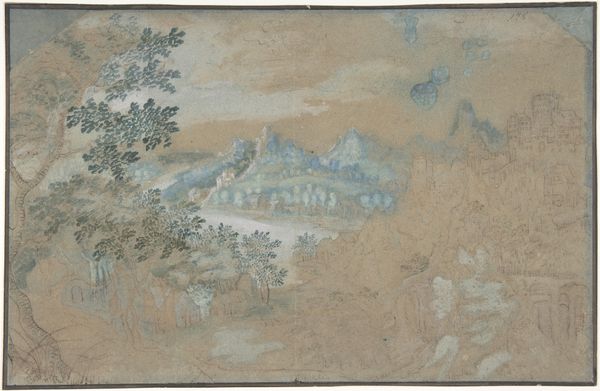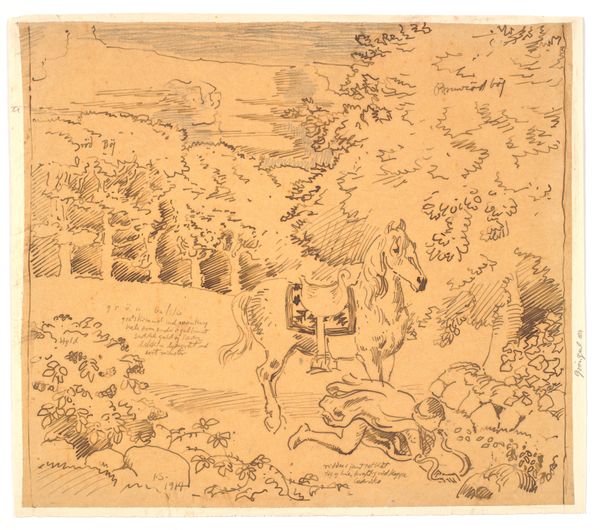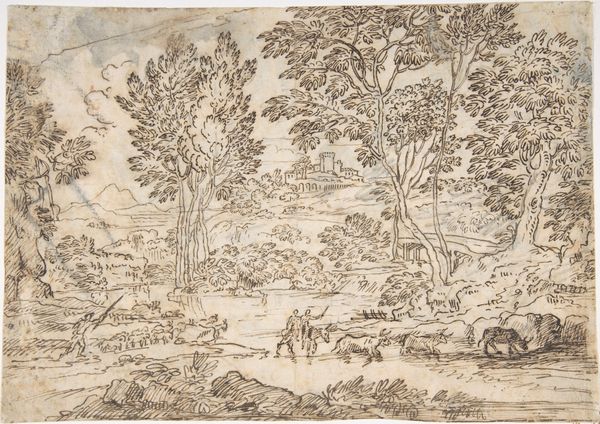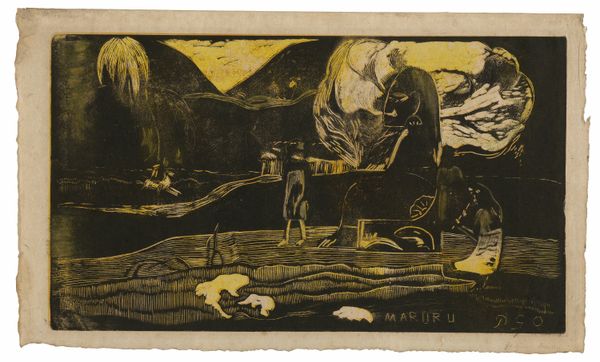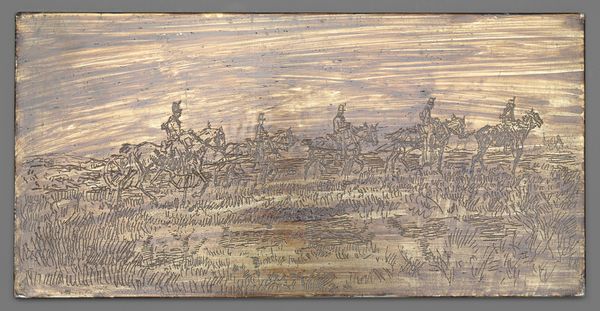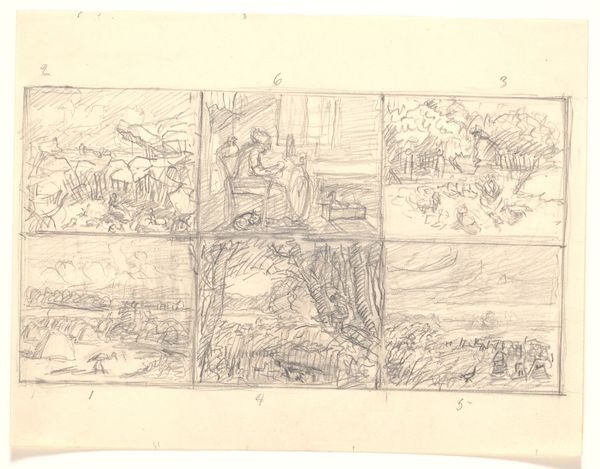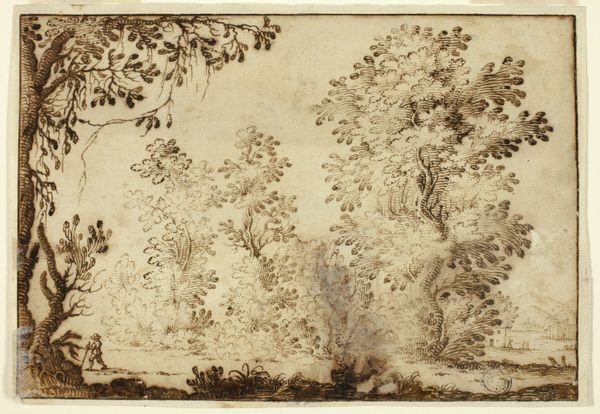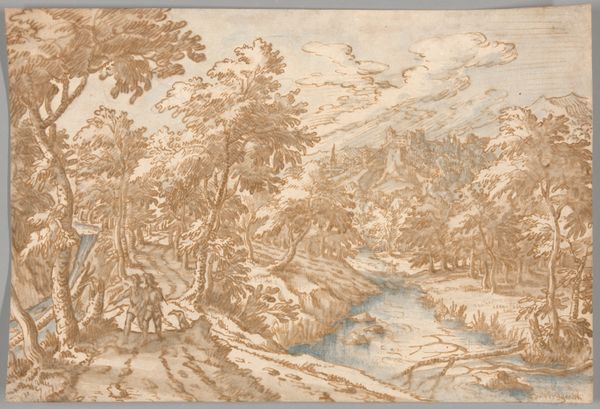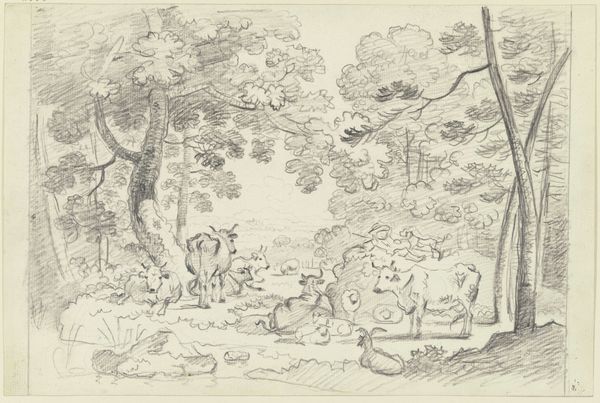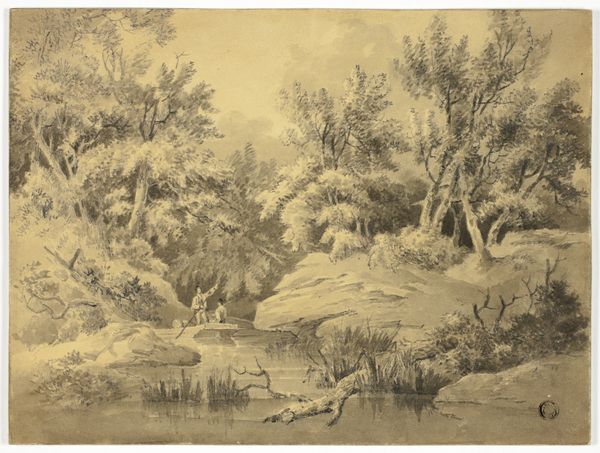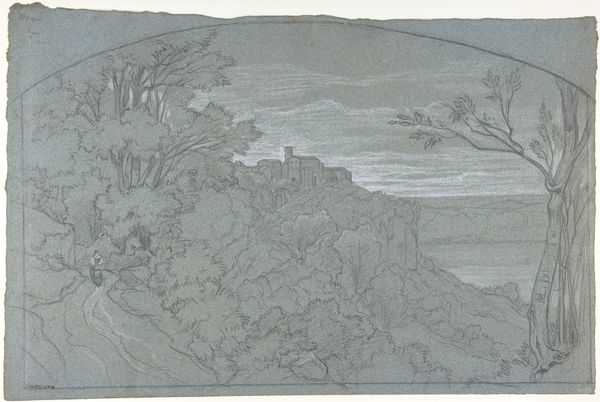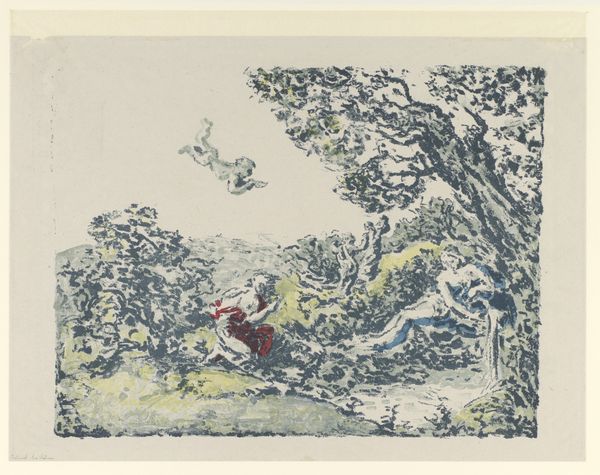
watercolor
#
water colours
#
landscape
#
watercolor
#
coloured pencil
#
naive art
#
genre-painting
#
watercolor
#
rococo
Dimensions: height 18 cm, width 24.5 cm, depth 1 cm
Copyright: Rijks Museum: Open Domain
Editor: So, this painted plate, dating back to 1750-1760, is a watercolor river landscape by Friedrich Hess. It feels quite dreamlike to me, almost theatrical. What strikes you when you look at it? Curator: I see a potent visualisation of societal structure. Note the sharp division between the established wealth on the right, with the large house, and the almost chaotic, slightly gothic depiction on the left with the architectural ruins. It really speaks to the disparities of the era. How do the figures relate, and how is access managed or not managed, through means such as the bridge? Editor: That’s a compelling point. I hadn't considered it in terms of wealth disparity. The bridge feels like a deliberate connection, but it’s also quite small and unassuming, almost fragile. Curator: Exactly! What might that fragility symbolise within a rapidly changing Rococo Europe? Think about power, access and gender at the time. Do you see these figures truly connecting, or just crossing? And, more importantly, who is allowed to cross and who is not? Editor: Now that you mention it, it does feel more like a liminal space rather than a true meeting point. I wonder, what role did these painted plates play in the context of their time? Were they simply decorative or something more? Curator: That's the critical question, isn’t it? This was not merely decoration, but an exercise in class, perhaps social commentary masquerading as decoration. Who commissioned it and what conversation might this artwork encourage among their peers? Considering art through this lens can really bring history to life. Editor: I agree. Seeing this landscape as a statement on social mobility rather than just a pretty picture gives it so much more depth. Thanks for that insight! Curator: My pleasure! Considering artwork with respect to power structures helps us recognise history's lasting effects. It encourages a more questioning way of looking at art history.
Comments
No comments
Be the first to comment and join the conversation on the ultimate creative platform.
